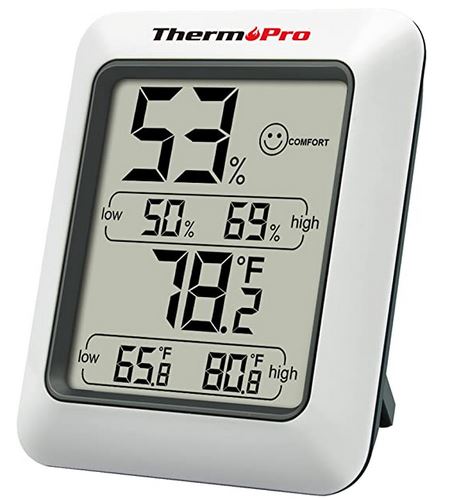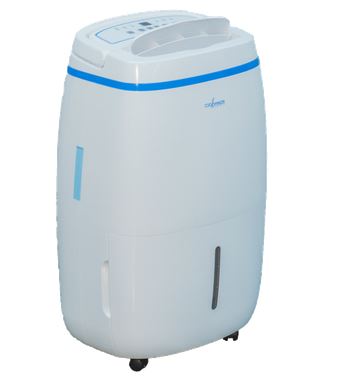We’ve been experiencing La Nina in Australia over the past few months and we’ve seen a record-breaking amount of rain and floods our way. As a result, you could be finding mould growing in your homes in places you’ve never seen it before. So, is it bad to have mould in your home and what tech can you use to clear it up? We have the full lowdown for you.
If you’ve noticed an increase in mould and mildew in your home or your office – you’re not alone. As the east coast of Australia continues to cope with the last few weeks of La Nina, even those who haven’t been flooded are reporting a huge increase in mould.
The question is – sure mould looks horrible and we don’t want it on our walls or in our carpets – but is it really that bad for you? The answer is a resounding ‘YES’!!!! Although mould can look fairly tame and you can think it’s just something you have to clean up – it’s definitely not something you want in your environment.
Mould is a fungus and even in small quantities, it can present a significant health hazard, causing asthma and allergies, respiratory problems, and in some cases neurological problems and after a prolonged period of exposure – even death.
According to Australia’s EPA, our indoor environment is two to five times more toxic than our outdoor environment. In fact, in some cases the air measurements indoors have been found to be 100 times more polluted. One of the most insidious problems which can affect your home’s indoor air quality is mould.
Why is La Nina making more mould grow?
Mould can grow undetected for months in areas which are high in moisture and warm temperatures such for much of the year in Australia. At times when we’re getting a lot of rain and it’s very humid – such as the past few months with La Nina – mould thrives. If the humidity level in your home or office is higher than 60 degrees, mould will definitely grow – on your walls, in your carpet, in your lounge, in your curtains – even in your wooden furniture.
How do you check your humidity levels?
You can check the humidity levels in your home or office with a humidity meter – and you can buy these online for as little as $20 ranging up to the hundreds. At least with one of these meters, you’ll know when the humidity in your home or office gets too high.
Of course, the humidity level in your bathroom will be higher at times because of the shower and the bath but as long as you have an exhaust fan in your bathroom and you run this for 20 minutes after your shower or bath, this will help dry the bathroom out.
However – it is a good idea to have a squeegee in your shower at all times and use this to wipe down the walls of the shower after each use as this will lower the humidity level much faster.

If you’re finding high humidity levels, you’ll need a dehumidifier
If you find when you’re using your humidity meter that your home or office has high levels of humidity, the first thing you can do is get some dehumidifiers to bring the humidity levels down.

There are many dehumidifiers on the market at a range of prices. But it’s good to keep in mind that all along the Eastern seaboard of Australia, there are quite a few months of high humidity so if your home has high humidity levels, these dehumidifiers will get a lot of use – so it’s best to buy one which is durable and can last the distance.
I’ve found the dehumidifiers at Damp Solutions have a good range of very dependable dehumidifiers which do the job well, so check them out. But these are the larger ones. If you’re after some smaller ones which will still do the job but at a reasonable price, check out the CBDH20 dehumidifier from Cool Breeze here. You may need a small one in each bedroom and a larger one in the lounge and kitchen area.
What about an air purifier?
As well as a dehumidifier, if you have high levels of humidity it’s probably a good idea to get an air purifier – or two. To start with you’ll need to clean up any dust on surfaces and windows and walls. I’ve found one of those automatic vacuum cleaners is a big help because you can run these twice a week and it’s amazing how much dust – and probably mould spores – they pick up! I’ve used the ones from Ecovacs are very helpful because at least this is a tech product which will clean up the carpet and other surfaces in your home with minimal effort from you.

But once you’ve cleaned up a bit, that’s when you should put on your air purifier for a few hours to clean up any of the mould spores and dust you’ve stirred up during your clean! Now again, there are many air purifiers on the market and they range in cost from very little to up in the thousands of dollars. I’ve found the air purifiers from Innovair are very helpful because if you buy a model like the AirClean E8 Air Purifier, it’s certified to be able to clean out the mould spores in your home. Other cheaper models of air purifiers are not equipped with the right filters to do this so they’ll only filter out the dust and not the mould spores.
What are ideal conditions for Mould?
As we’ve said, La Nina has been making many areas of Australia very humid with so much extra rain and this does bring about ideal conditions for mould. When it rains so much, new leaks may spring up and so you should check your ceilings, walls and plumbing systems to see if there is mould growing anywhere.
If you’ve been flooded – of course this will often lead to mould growing because your walls, carpets and furniture have so much more moisture in them and this will lead to mould growth. You’ll have to clean out any mould that’s grown and then see if you can remediate.

There are many products you can use to remediate mouldy areas of your home or office. An Australian company called San-Air produces some amazing products which kill mould but they only contain natural oils and other sustainable products, so you won’t be badly affected by them.
But be aware – if the mould is right through the floor boards or in the fabric of the wall, you may need to virtually knock down the areas affected and rebuild. Mould is so pervasive because of its spores and its tenacity, sometimes this is the only solution.
You should also keep your windows open during the day so you have a good flow through of fresh air and let as much sunlight in as possible. Another great tip is to have indoor plants as they improve the indoor air quality by removing VOCs including formaldehyde, paint, and benzene (a byproduct of chemical based-cleaners).
For more information contact: If you find you have a mould problem in your home, you can contact Pamela Connellan from Your Better Health here. She works as a Mould & Chronic Illness Coach and she can check your mould problem and let you know what to do about it.
For more from Women Love Tech on how to stay healthy, visit here.





